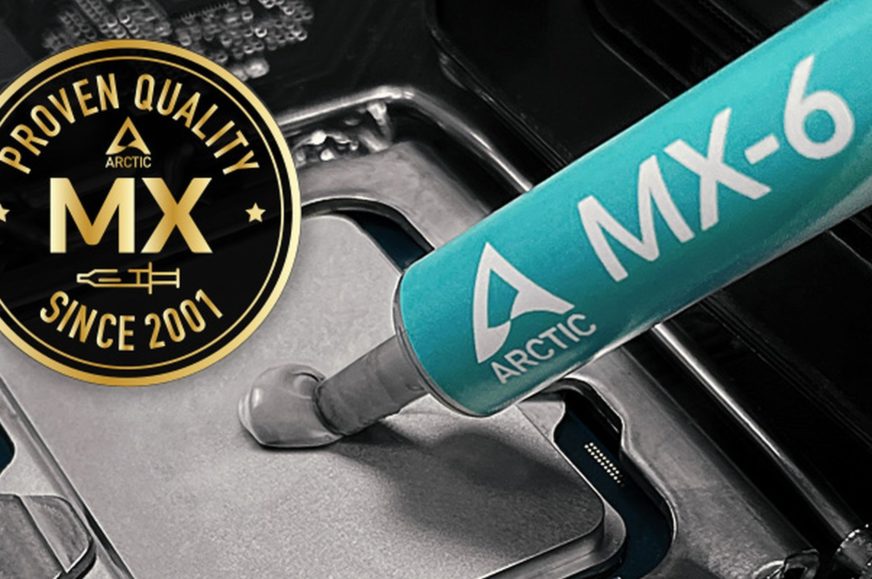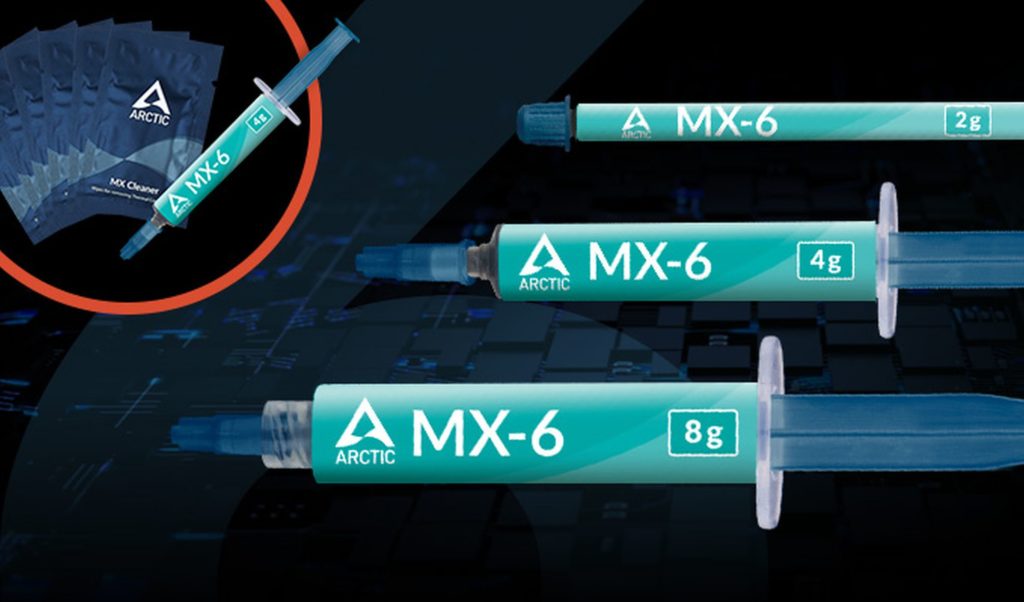Arctic MX-6 heads to stores
Arctic is renumbering the MX thermal pastes (from 5 to 6) faster than ever before. The MX-5 arrived just last year, but earlier this year there was a report that some batches were drying up prematurely. As a result of such a shortcoming, customer confidence in these thermal pastes may have been so lowered that a new model is the best route to take from a business perspective. And here it is, unfortunately again without the basic parameters.
The MX-6 thermal paste will round out Arctic’s lineup and is actually a replacement for the MX-5, which is now officially listed as a discontinued product. That’s after just under two years (20 months), which is an extremely short time in a market as stagnant as the thermal paste market. There is an eleven year gap between the MX-4 and MX-5, and the promotion of the Noctua NT-H1 to the more efficient NT-H2 took even two years longer. However, production of the MX-5 clearly didn’t go quite as expected, with Arctic identifying some batches as problematic due to oil separation from the rest of the mass.
We don’t know exactly what was behind the discontinuation of the MX-5 thermal paste, but it was apparently easier to release a model with new naming. The main reason could perhaps be a different, easier manufacturing process for Arctic, and it can’t be ruled out that there wasn’t much interest in the MX-5 because it had profiled itself as a “risky” paste, whereas there are plenty of “reliable” ones on the market that hold up well. That model should now be replaced by the MX-6, with which Arctic is surely looking to follow up the successful MX-2, which, by the way, is still selling.
The Arctic MX-6, according to the manufacturer’s specifications, is supposed to have a very similar density (2.6 g/cm3) to the MX-4 (2,5 g/cm3). But it’s hard to guess what the viscosity of the MX-6 is, it probably won’t be 45,000 Poise as Arctic states in the specs. But it also doesn’t seem that Arctic has made a mistake only in the number of zeros, 4500 Poise is still unrealistically high and 450 Poise (45 Pa-s) again not enough if it is to be a thinner paste than MX-4 and MX-2.
From the parameters we learn what the electrical resistance should be (1.8 × 1012 Ω-cm), the amount of breakdown voltage (7.5 kV/mm) or the operating temperature range (-50 to +150 ℃). These are all nice, detailed parameters, but they hide the absence of the main thing – thermal conductivity. Arctic started avoiding it already with Arctic MX-5 paste and retroactively deleted this parameter (apparently for the sake of uniformity) even with older pastes, although it was once publicly available. One reason for this may be that the intergenerational improvements do not match the price increases. Especially when compared to the still-cheap MX-2 paste at less than half the price.
The Arctic MX-6 thermal paste is more expensive again. Typically, the best-selling, 4-gram pack is priced at 8.50 EUR, i.e. +46 % to the recommended price of the MX-5. The smaller tube (2 grams) with MX-6 is supposed to cost 6.80 EUR and the largest (8 grams), with the lowest price per gram, 12 EUR. The medium pack with 4 g of paste will also be available with a set of five cleaning wipes for an extra charge of about 1.30 EUR.
English translation and edit by Jozef Dudáš
- Contents
- Arctic MX-6 heads to stores














